Alhambra in Granada- Visiting the Nasrid Palaces
We’ve been in Granada, Spain for two full days now and we’ve yet to visit the Alhambra Spain. We’ve looked at it at night from above sitting on the third floor patio of our apartment in the Albaicin.
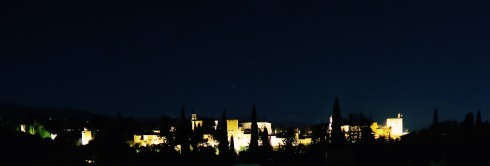
And we’ve looked at it from below, walking up the Carrera del Darro.
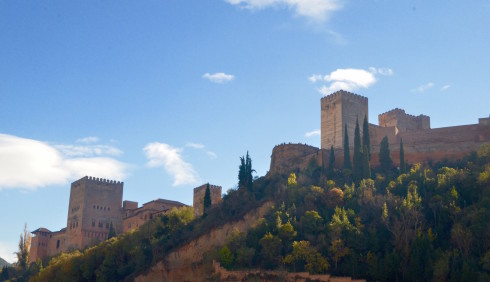
This morning we are going to solve that problem, but first this question.
What Exactly is the Alhambra?
The Alhambra is not one building or even a collection of buildings, but rather a huge complex of palaces, the fortress of Alcazaba and numerous gardens. These all date from the period of Moorish rule in Granada and were mostly constructed in the 13th and 14th centuries. Superimposed on the remains of some of these, including the Mezquita or mosque, are a number of Christian built edifices including the palace of Charles V, the church of St. Mary and a monastery which is now the Parador de Granada. However it is unquestionably the Moorish architecture that is the star attraction of the Alhambra and we can only contemplate what was destroyed and be thankful for what wasn’t. Even these Christian conquerors who gave us such a venerable institution as the Spanish Inquisition, recognized the timeless beauty of the Nasrid Palaces and left them alone. The result is that today, Spain may well have the most beautifully preserved works of Moorish architecture in the world. It is the most popular tourist attraction in all of Spain. In 2014, almost two and a half million visitors flocked to see it. Who knew there would be such benefits to a little common sense on the part of the Christian conquerors?
Here is a map of the Alhambra with arrows denoting the general path visitors take in touring the Alhambra Spain. In this post I have provided practical details about getting tickets, the best time to go and other helpful hints on making your visit more enjoyable.
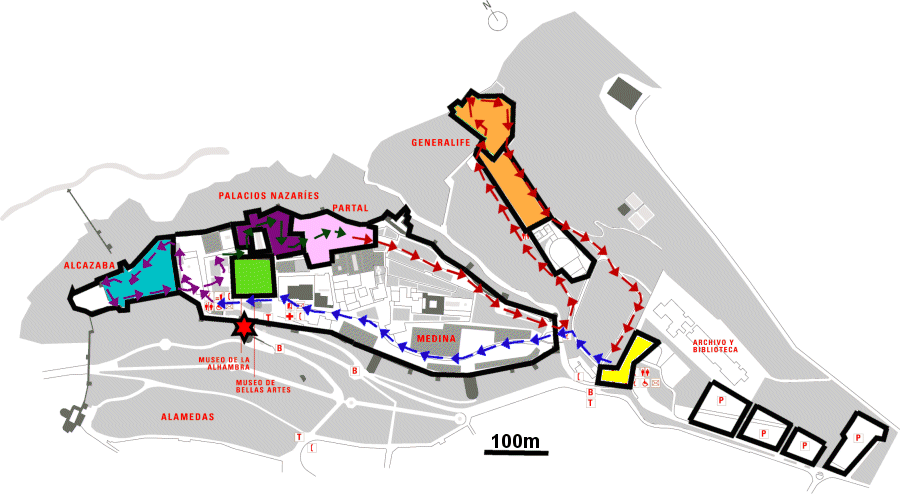
In the balance of this post I’m going to concentrate only on the Nasrid Palaces (shown on the map as the Palacios Nazaries). I’ll cover the rest of the Alhambra in my next post. So let’s go!
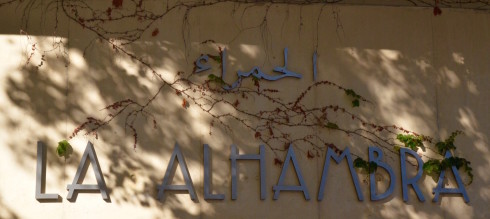
What are the Nasrid Palaces?
Put simply, this collection of linked palaces is what most people think of when they call up images of the Alhambra. They were built primarily by the last Muslim rulers in Spain, the Nasrid dynasty who managed to hang on in Granada for over 250 more years after the nearby cities of Cordoba and Seville were retaken in the reconquista. So while the great mosques and palaces of these latter cities were being either razed or repurposed, Moorish architecture was rising to new heights in the Alhambra. There are three palaces in the Nasrid complex; the Mexuar where public administration functions were carried out, the Comares Palace which was the king’s residence and the very private Palace of the Lions which contained the harem and the baths.
There is only one entrance to the Nasrid Palaces and you must follow a set pathway from room to room, but you do get to see everything and can linger as long as you want at any particular place. The starting point is the Mexuar where you get just a hint of what’s to come. Islamic art and architecture uses only calligraphy and repeated patterns and motifs (arabesques) for decoration and not representations of Allah, saints, humans or animals. It is the antithesis of Christian, particularly Catholic, decorative techniques. While both styles have their positive aspects there is no doubt that the Islamic style is incredibly pleasing to the eye. Note that the decorative work extends to the wooden ceilings. Also note how Alison is dressed. It was bloody cold the day we visited.
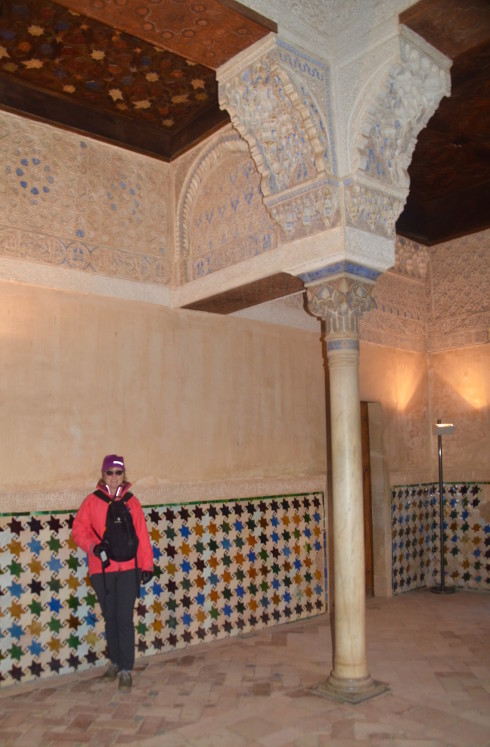
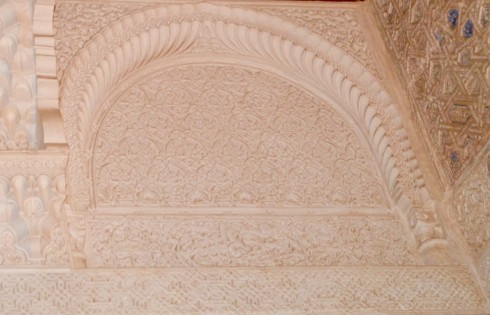
Since the Mexuar was open to the general public doing business with the king, the rulers were clearly not going to waste their best stuff on the hoi polloi. However, things start to improve as you get to the Oratoria which is connected to the Mexuar and definitely a step up architecturally. Here you first see the distinctive Moorish arches and the incredible decoration that covers every square inch of the walls and ceilings. The calligraphy apparently spells out “God is the only victor”. You also get the first look at the fantastic views of Granada from within the Nasrid Palaces.
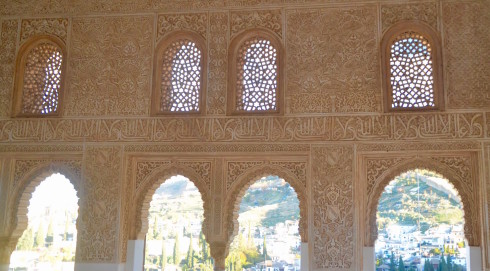
Then things really get going. You don’t know where to look next. In the Golden Room it is definitely up at this fantastic inlaid ceiling.
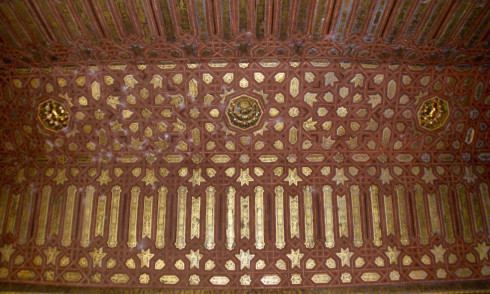
Passing through the Golden Room you come to the first of a series of courtyards that have made the Alhambra famous. The architectural symmetry is startling and impressive.
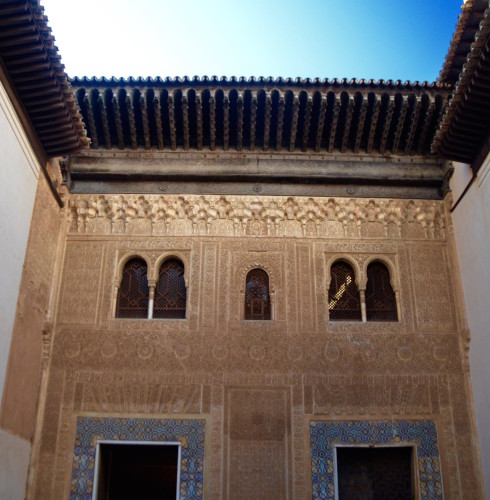
I’m not the only one who is almost struck dumb by the beauty of this place.
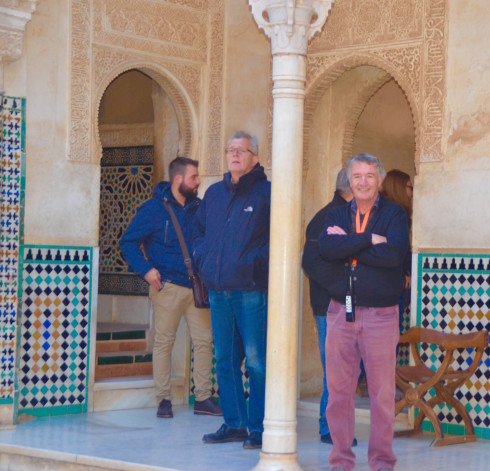
Here is the stunning Court of the Myrtles. By being patient I was able to get a shot with almost nobody in it. Numerous tour groups were passing us as they almost literally whisked their way through. In between these barrages one could get a much better appreciation of the subtleties of design and reflect on what it would be like to be a Moorish king and have this all to yourself.
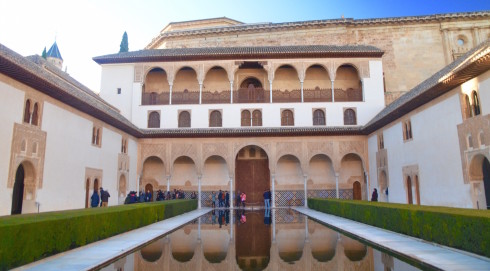
Patio of the Lions
The final courtyard in the Nasrid Palaces is probably its most famous, the Patio of the Lions. Earlier I wrote that Islamic art did not use depictions of animals, so what’s up with this? Am I just an ill-informed bullshitter? The truth is a bit murky and there are numerous possible interpretations, but the one that makes the most sense is this. Everyone agrees that the lions are much older than the surrounding structure which was designed in the 1300’s. There are twelve lions and they may represent the twelve tribes of Israel (isn’t that ironic?) as they were apparently sculpted for or by a Jewish vizier in the 1100’s. Incorporating them into a fountain in a position of submission i.e. under the large bowl, apparently skirted the prohibitions against idolatry. I’m just glad they did because this open area with the lion fountain in the middle surrounded by dozens of these slender decorative columns is something worth traveling a long way to see. I’ll never forget it.
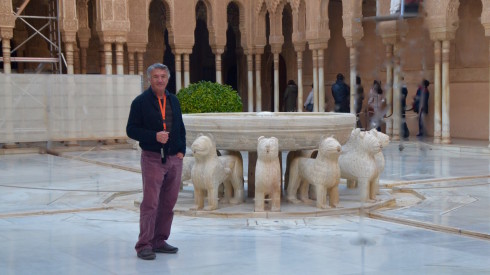
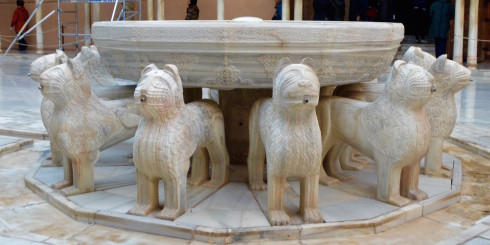
The Nasrid Palaces have many miradors of viewpoints, most of which feature grand views of Granada or another part of the Alhambra. However, the Mirador of Daraxa looks out to a small garden which, framed by the two windows and with the coloured tiles below, looks positively surreal.
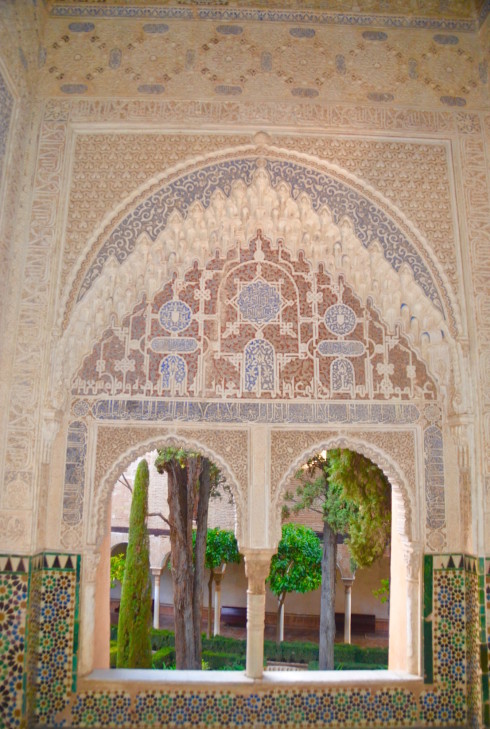
Things get more fantastic with an out-of-this-world quality in the Hall of the Abencerrajes which has a bloody history. A massacre of knights of a dissident faction called the abencerrajes allegedly took place within its walls. Imagine with your dying breath looking up and seeing this fantastic ‘stalactite’ ceiling. You might think you’re already on the way to Paradise. Maybe not.
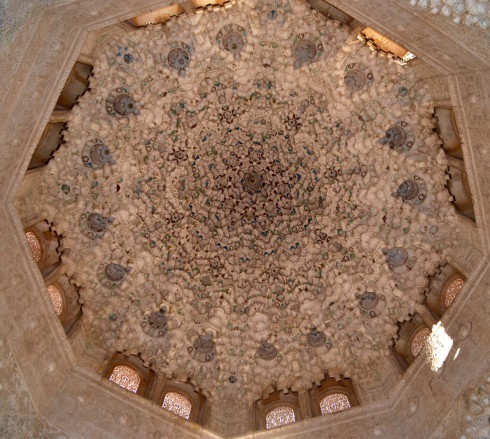
It’s impossible not to stop, again and again, to examine up close some of the myriad of detail that has gone into the construction of these palaces.
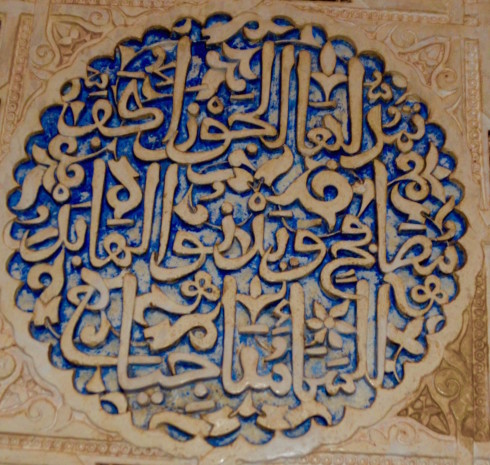
One of the last set of rooms you come to is the harem area which also contain the baths. It’s just a bit chilly today to be thinking about a bath in an unheated room.
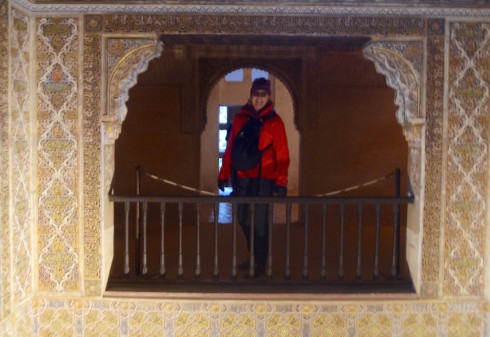
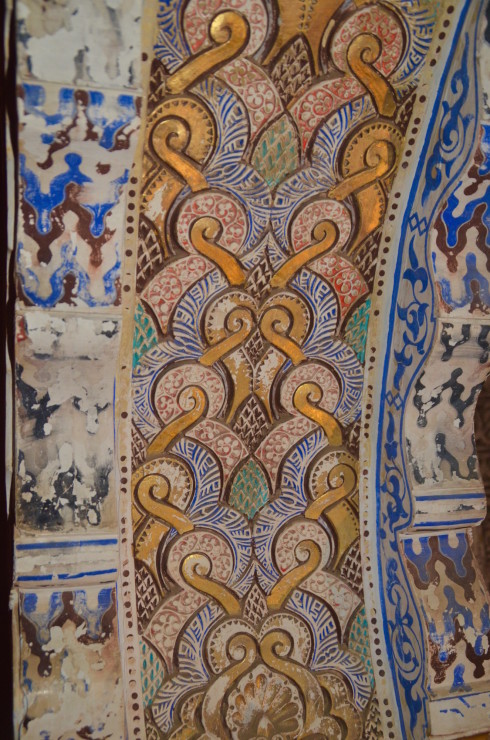
Near the exit we found this plaque to Washington Irving of Sleepy Hollow fame. A little research showed that Irving was a visitor here 1828 and was so impressed he wrote Tales of the Alhambra which many credit for putting the Alhambra ‘on the map’ as they say.
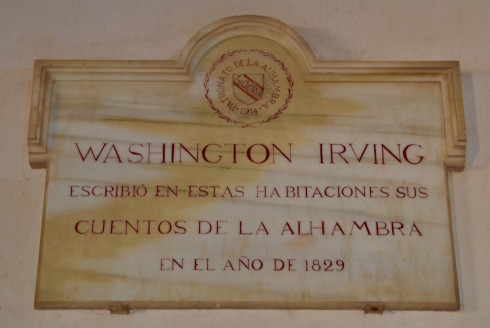
This marks the end of the tour of the Nasrid Palaces, but not the end of our visit to Granada. Join us as we explore the city proper.

